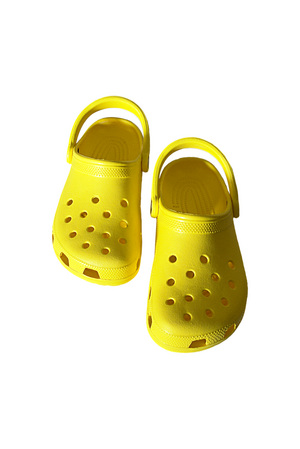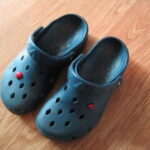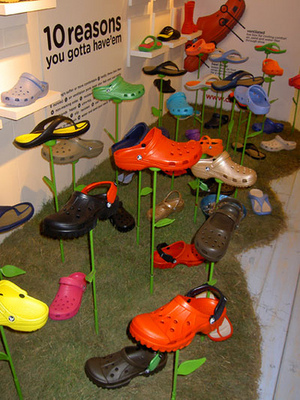Associated Press Reporter Sarah Karush, in an article on theReformer.com September 18, 2007, reported that the popular clog known as Crocs is the common denominator in a rash of escalator accidents involving children. Crocs and the knock-offs have become very popular with children, as well as adults. Children as young as two years old wear the clogs. The article states that one of the nation’s largest subway systems, The Washington Metro, has posted signs depicting the Croc brand and stating that shoes like them are a safety hazard on moving stairways. David Lacrosse, of The Washington MetroSubway System is quoted saying that he would not let his children wear Crocs. However, staff writer Leslie Earnest, published an article September 20, 2007 in the the latimes.online. She quotes Lacrosse stating, “Crocs” are “getting a raw deal.” The latimes.com article reports that Lacrosse’s opinion is that sandals and flip-flops are most commonly snared by escalators in Washington Metropolitan Area Transit Authority subway stations
The Associated Press article tells the story of four year old Rory McDermott, who got his foot caught on an escalator in a northern Virginia mall. His mother was able to pull him free, but not until after his big toenail was pulled completely off. An emergency room attendant remarked on the shoes Rory was wearing as a possible cause of the accident. When Rory’s parent, Jodi McDermott went home, she stated that she typed in the word “croc” on the Internet and it retrieved many stories involving similar accidents. The common denominator was the clogs in question. Most of the accidents involved children. The Associated Press article states that there are reports appearing across the United States and as far away as Singapore and Japan. Crocs, and other clogs like them, are particularly liked because of their flexibility and grip. The entrapments are apparently being caused when the shoes are caught in the “teeth” at the bottom or top of the escalator. The space between the beginning and the end of the movable stairway is also been named as a common point where the Crocs are caught.. The Japanese government warned consumers last week that there have been 39 accidents on escalators, mostly involving children, in August and September. In all 39 accidents, the children were wearing Crocs or a similar sandal. The Associated Press states that the American Girl Retailer has posted signs instructing children who are wearing Crocs or similar shoes, to use the elevators instead of the escalators.The Associated Press article goes on to report that The U.S. Consumer Product Safety Commission statistics show that there were more than 10,000 injuries last year on escalator, but at the beginning of 2006 only two shoe entrapments had been reported and only one of them involved the type of rubber clog like Crocs. The latimes.com article states that Crocs Inc. has stated that the statistics from the Consumer Product Safety Commission show that “of the 53 reports in its files over a five-year period about escalator-footwear tangles, Crocs were named in four, with one resulting in an injury.” The latimes.com article also has the story of Maryam Banikarim, chief marketing officer for Univision Communications Inc. She and her 7 year old son Nicholas Lerner were on an airport escalator on Labor Day. She states that her son “started screaming bloody murder.” “The side of the escalator is sucking up his shoe and foot at the same time,” she said. “It was terrifying.” Her son required 10 stitches in his foot from the accident. The latimes.com article did not state whether or not this child had on a Croc or another rubber clog, but left that impression since it was in the article about that subject.
The statement that resonated the most with me out of both articles is the one made by Leslie Earnest writing for the latimes.com. Her comment was,
“The statistics don’t matter much if you’ve watched an escalator gnaw on your child’s shoe.”




